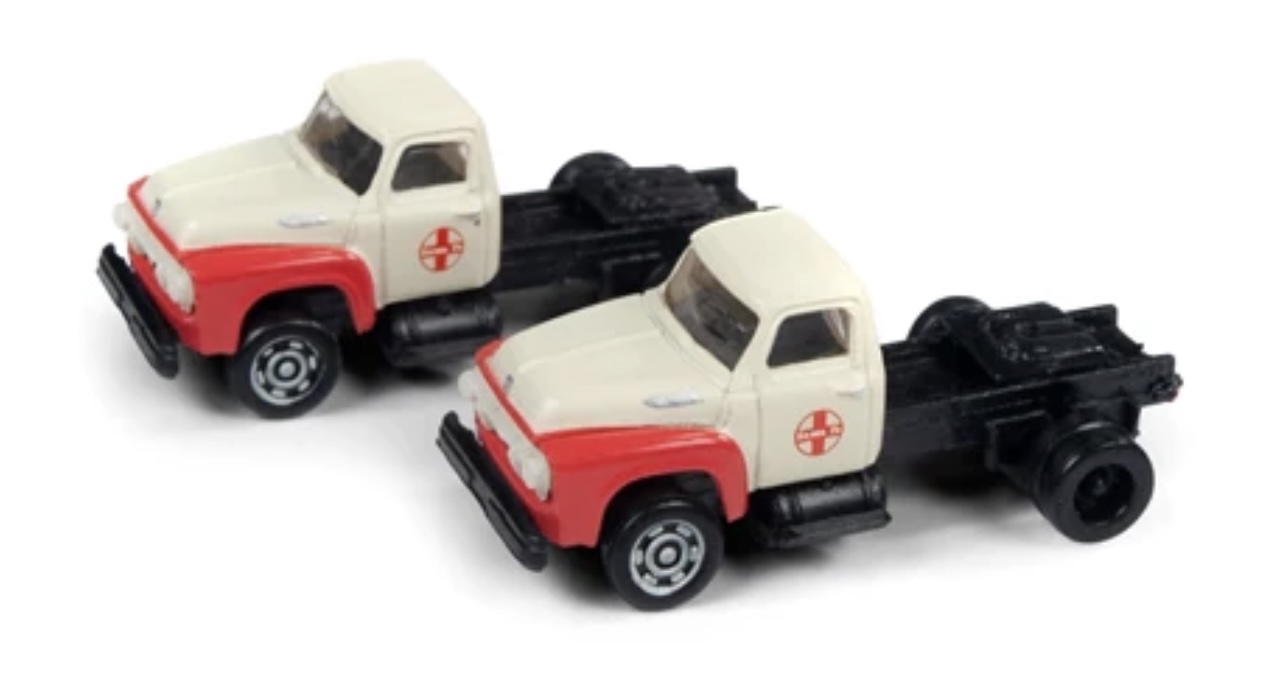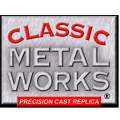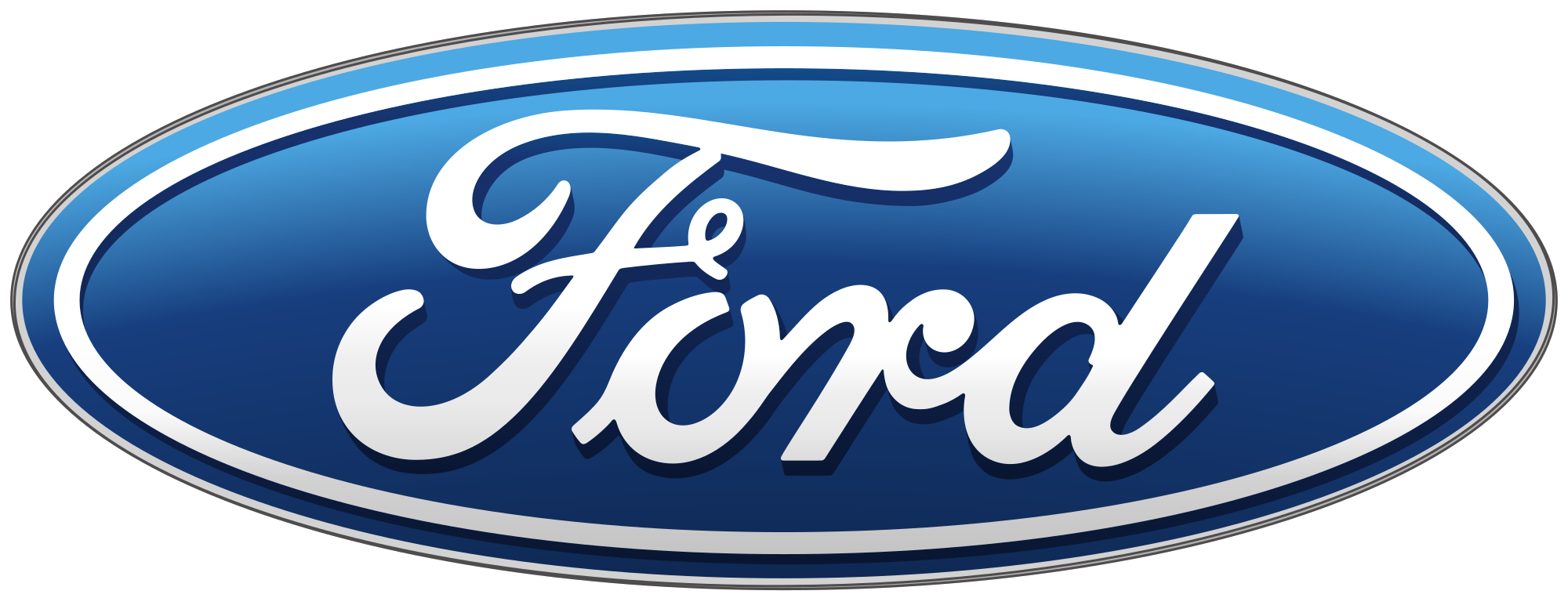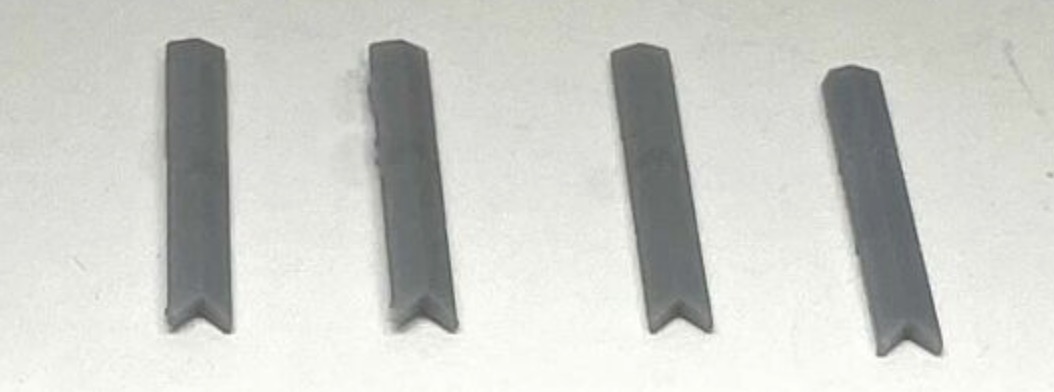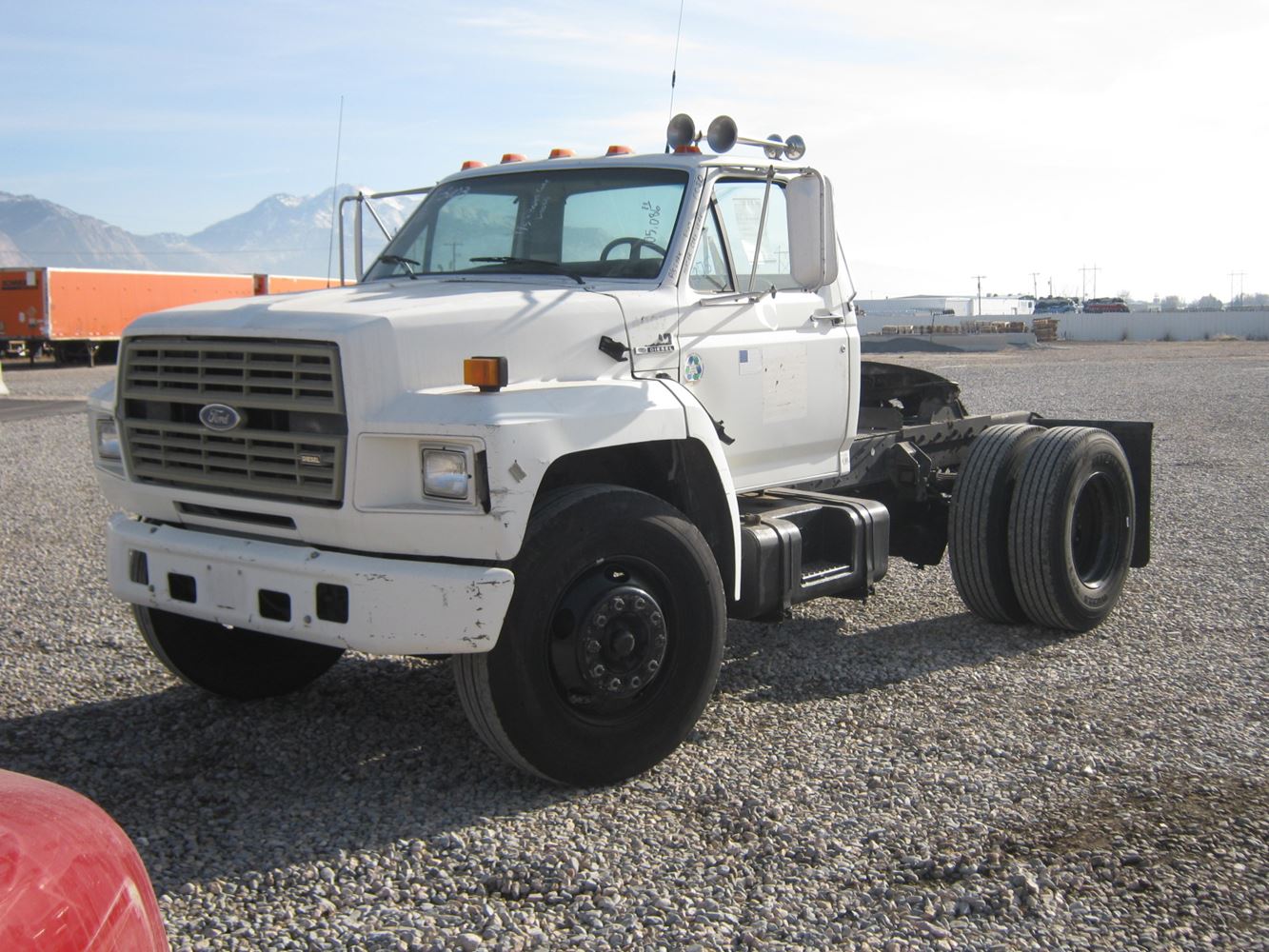Prototype History: The Ford F-Series heavy Duty trucks were introduced in the mid 50s and have been produced over years in several generations. These trucks are fitted with V8 engines. Typical models are F-800 and F-900.
Above its medium-duty truck ranges, the Ford F-Series was used as a heavy-truck chassis during its early production. In 1951, Ford debuted its "Big Job" line, denoting the F-8 conventional. In 1958, the "Super Duty" and "Extra Heavy Duty" replaced the Big Job trucks, marking the debut of the Super Duty V8 engine line.[41] In 1963, the N-Series became the first short-hood conventional built by Ford, replacing the F-900 Super Duty/Extra Heavy Duty. Although based on an all-new chassis and separate bodywork, the cab was sourced from the F-Series.
In 1970, Ford introduced the L-Series "Louisville" line of conventional trucks, moving all heavy truck development away from the F-Series. The L-Series/Aeromax would remain in production through 1998, as Ford exited the North American heavy-truck segment. Outside North America, Ford builds the Ford Cargo, and Ford F-MAX.
Above its medium-duty truck ranges, the Ford F-Series was used as a heavy-truck chassis during its early production. In 1951, Ford debuted its "Big Job" line, denoting the F-8 conventional. In 1958, the "Super Duty" and "Extra Heavy Duty" replaced the Big Job trucks, marking the debut of the Super Duty V8 engine line.[41] In 1963, the N-Series became the first short-hood conventional built by Ford, replacing the F-900 Super Duty/Extra Heavy Duty. Although based on an all-new chassis and separate bodywork, the cab was sourced from the F-Series.
In 1970, Ford introduced the L-Series "Louisville" line of conventional trucks, moving all heavy truck development away from the F-Series. The L-Series/Aeromax would remain in production through 1998, as Ford exited the North American heavy-truck segment. Outside North America, Ford builds the Ford Cargo, and Ford F-MAX.
Road Name History: The Atchison, Topeka and Santa Fe Railway (reporting mark ATSF), often abbreviated as Santa Fe or AT&SF, was one of the larger railroads in the United States. Chartered in February 1859, the railroad reached the Kansas-Colorado border in 1873 and Pueblo, Colorado, in 1876. To create a demand for its services, the railroad set up real estate offices and sold farm land from the land grants that it was awarded by Congress. Despite the name, its main line never served Santa Fe, New Mexico, as the terrain was too difficult; the town ultimately was reached by a branch line from Lamy.
The Santa Fe was a pioneer in intermodal freight transport, an enterprise that (at one time or another) included a tugboat fleet and an airline (the short-lived Santa Fe Skyway). Its bus line extended passenger transportation to areas not accessible by rail, and ferryboats on the San Francisco Bay allowed travelers to complete their westward journeys to the Pacific Ocean. The ATSF was the subject of a popular song, Harry Warren & Johnny Mercer's "On the Atchison, Topeka and the Santa Fe", written for the film, The Harvey Girls (1946).
The railroad officially ceased operations on December 31, 1996, when it merged with the Burlington Northern Railroad to form the Burlington Northern & Santa Fe Railway.
Read more on Wikipedia.
The Santa Fe was a pioneer in intermodal freight transport, an enterprise that (at one time or another) included a tugboat fleet and an airline (the short-lived Santa Fe Skyway). Its bus line extended passenger transportation to areas not accessible by rail, and ferryboats on the San Francisco Bay allowed travelers to complete their westward journeys to the Pacific Ocean. The ATSF was the subject of a popular song, Harry Warren & Johnny Mercer's "On the Atchison, Topeka and the Santa Fe", written for the film, The Harvey Girls (1946).
The railroad officially ceased operations on December 31, 1996, when it merged with the Burlington Northern Railroad to form the Burlington Northern & Santa Fe Railway.
Read more on Wikipedia.
Brand/Importer Information: Focused on the production of HO and N Scale post World War II to 1970s era North American vehicles, the Sylvania, Ohio based Classic Metal Works was founded in 1997, by William J. Giacci.
Primarily constructed out of die-cast metal, Mini Metals CMW products are factory assembled and decorated.
In May 2017, Classic Metal Works and Mini Metals product ranges have been taken over by Round 2 Corp.
Note: The following CMW stock numbers have not been used, breaking the linearity of the numbering: 50313 to 50315, 50362 to 50364, 51154 to 51163
Primarily constructed out of die-cast metal, Mini Metals CMW products are factory assembled and decorated.
In May 2017, Classic Metal Works and Mini Metals product ranges have been taken over by Round 2 Corp.
Note: The following CMW stock numbers have not been used, breaking the linearity of the numbering: 50313 to 50315, 50362 to 50364, 51154 to 51163
Item created by: CNW400 on 2020-01-29 10:08:01. Last edited by CNW400 on 2022-07-07 11:52:09
If you see errors or missing data in this entry, please feel free to log in and edit it. Anyone with a Gmail account can log in instantly.
If you see errors or missing data in this entry, please feel free to log in and edit it. Anyone with a Gmail account can log in instantly.


